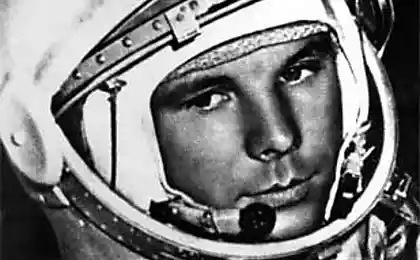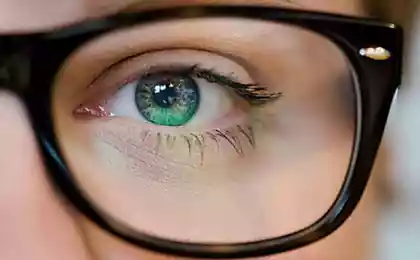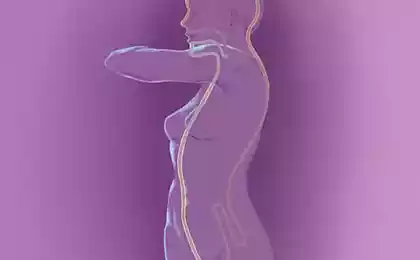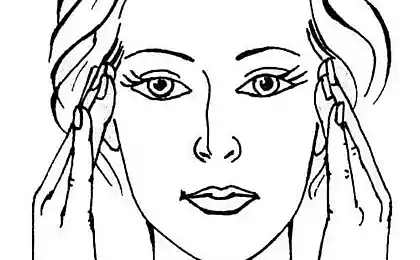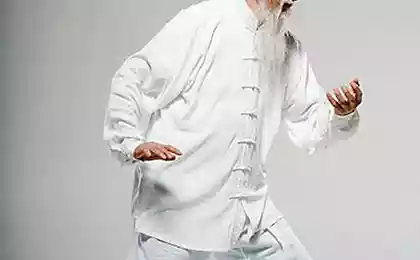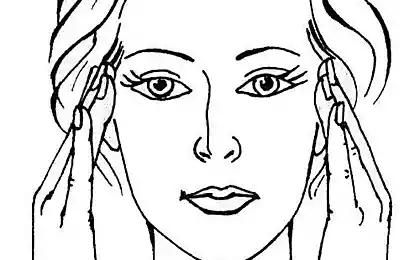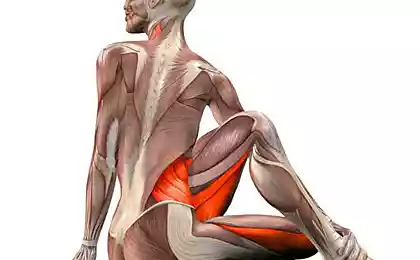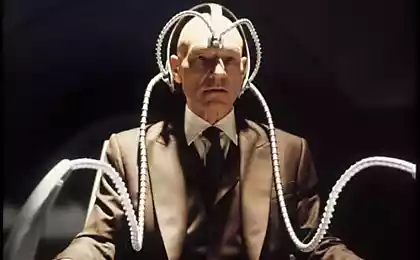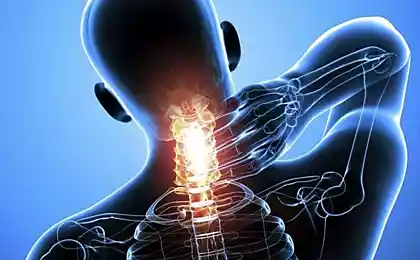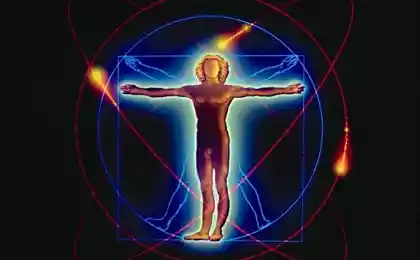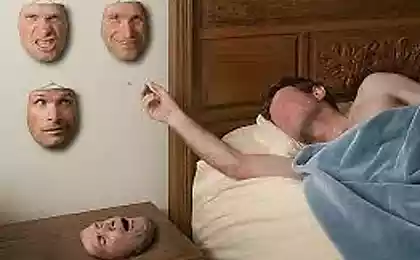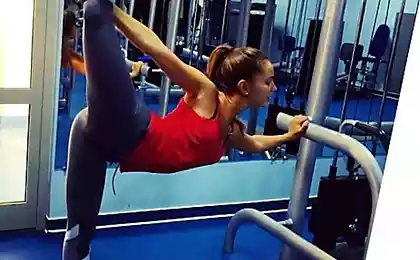557
Head turning: the technique of liberation from the clamps, back problems and neck
This easy lesson Awareness through movement created to teach you to turn your head and neck more smoothly, and also that you understand how the whole body is involved in this process.
The lesson takes 15 — 20 minutes and after you run will help you to feel better self-awareness impact on health and quality movement. It will also help to recognize and remove the stress that occurs when working at the computer in the eyes, neck, upper body.
This lesson is a tour of one of the parts of your body. If you decide to return to the lesson later, don't try to do it exactly the same way as the first time. You can repeat the same travel tour, but every time notice new things. To benefit from the lesson, you should really perform it, not just to run through the eyes. You need to devote lesson time to read the instructions and feel the experience of the described movements.
Lessons in the Feldenkrais uses gentle movement and directed attention, which helps to expand your self-awareness and internal "self-image"through which we see our movement.
Your movements serve as a tool for retraining the brain and nervous system, it is in the process of learning your movements improve. The goal in this case — learning, not rote repetition. The result comes due to the fact that you notice, but not at the expense of the movement itself. During the lesson, strive to comfort. The pain and discomfort forces you to reduce awareness, and in this case, training will not be effective.
Each paragraph of the lesson is a separate part. Read one paragraph at a time, then close your eyes and follow these movements. Repeat the movement as many times as you need to feel the movement. Usually missing 5-10 times. If you wear glasses, remove them while performing the movements.
The initial position and "calibration motion"
1) Sit comfortably in your chair, keep loose, not tight. Sit far enough from the back so that you have space to move and back didn't bother him.
2) Close your eyes. Slowly turn the head to the right without effort, and stop driving as soon as you feel the stress.
Notice the quality of movement. When you turn your head, open your eyes and notice where you look. This will be the starting point for comparison — to this point, your head turns effortlessly at the beginning of class. We will call this movement "calibration motion" and later we will return to it again to see the changes.
Examine the right side
3) Close your eyes, and repeatedly turn your head to the right and then back to the center. Turn not as far as during the "calibration motion", but only three-fourths of the maximum movement. Notice the quality of the movement when you turn your head.
4) Keep turning your head to the right and back to center as before, but when you turn, notice how far down the spine the movement. Do only the movement of the neck or you feel the movement and lower spine?
If you continue to pay attention to this movement, you can feel how the movement will be lower than at the beginning of class.
5) Repeat "calibration motion". Close your eyes and turn your head to the right without effort until it stops. Open your eyes and notice how far she turned around now. Is the current position from the calibration position for the first time?
6) Sit without movement for a few seconds and observe all your sensations. Do you feel the difference between sensations on the right and left?
The plug-in shoulders
7) Close your eyes and repeat several times turn head to the right and back to center as before. Notice the sensations in the shoulders
Does the left shoulder tends to go forward, and the right — to go back? Give these movements occur, now the upper part of your body will slightly rotate when you turn your head. Not improve this rotation, just let it happen naturally. Does that head movement easier or more difficult?
A large part of the effort that you spend on Commission motion is on hold in place of part of the body that needs to move. Therefore, when such a part is involved in movement, it becomes considerably easier.
8 ) Keep turning your head and eyes to the right and then to the center, feeling the movement below in the spine and allowing your shoulders to participate in the movement as before. Notice what you are doing with your eyes. Begin to move the eyes to the right when you turn your head to the right and then to the center when the head is rotated to the center. Does that head movement is easier or more difficult?
The use of eye
9) While you continue turning the head and eyes to the right and back to center, gradually shift your attention to the eyes.
Make the eye movement is key, as if you move your eyes to look at something and your head turns to follow.
Allow movement to follow down the spine to each vertebra took part in it. Repeat this movement 5-10 times and feel the movement throughout the body.
10) Repeat the calibration movement. Close your eyes and turn your head to the right with no effort to stop. Open your eyes and see how far you turned? Further than the first time?
Turn your head slowly once or twice from left to right, and appreciate the difference movements at turn one and in the other direction.
Sit quietly some time and evaluate your feelings. Is there a difference between sensations on the right and left?
Is there a difference?
11) Many people feel significant differences between the two parties at this point. Head turns to the right further and easier than the left, and easier than it was in the beginning. Right side of the body may feel lighter, more relaxed, more distinct. If you feel these differences, just sit with them for a few minutes, do not rush to make feeling symmetrical.
If you don't feel the difference, also note that. Go back to the lesson in a few days and try running the lesson again, most likely they will manifest.
What caused these changes? One answer may be that just the mere mechanical act of movement "exercise" your muscles, stretching them a bit and coat the joints. But there is another answer — something that changed your condition is learning your body and how it moves. When you watched their movements, you learned something about your movement, and it has improved the process.
Work with the left side using your imagination
To make sure that that awareness has led to changes, not the movement itself, try the following: we go through the motions of the lesson turning left, not right, BUT this time will carry the movement in the imagination, and not moving really. Don't keep yourself hard, do not resist small movements, if they occur, but mainly represent the movements and not move really. As before, read the first paragraph, then drag and copy, then go to the next paragraph.
1) Imagine that you are turning your head to the left, feeling how the movement happens below the spine.
2) Imagine that you feel a tendency to move in your shoulders and also imagine that you give the body to respond to this trend. Imagine that your left shoulder moves back when you turn to the left, and moves forward when you turn back to the center.
3) Imagine you turn your head left and your right shoulder moves forward and then back when you turn your head to the center.
4) Sit for a few seconds, watching your feelings. Was reduced if the difference between the two sides, which has been observed before?
5) Now imagine that you turn your head to the left and employ your eye so that when you turn
eyes to the left and to the center head. Eyes when it starts moving, and the neck, shoulders, torso turn smoothly behind them.
6) Sit without moving, noting your experience. Then in reality turn your head from left to right. Notice how far you can turn on each side. Note the quality of movement. How do you feel now both sides? Whether they are more symmetrical?
Compare the left and right sides
Many people note that movement in the imagination is well balance both sides — and that previously observed differences they felt between the left and right sides decreased significantly, if not disappeared altogether. Some even find that the left side moves easier and smoother than the right.
If you have any such feelings, it should be obvious that the changes came not from physical movement — because it was not. They resulted from something else, from learning and changes in awareness caused by imaginary movements (what you did movement in the right direction, of course, gave you a model to copy in your imagination).
If changes in the left side you do not feel, do not despair. Imagination is like muscles. It gets better the more you use it.
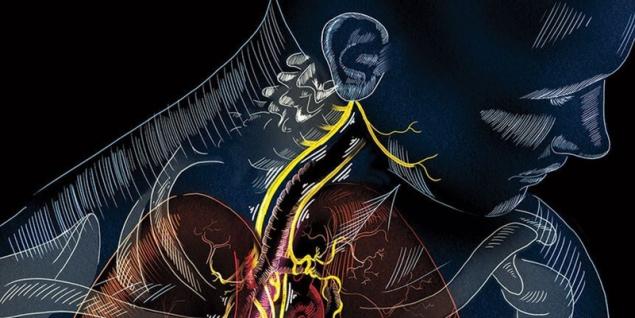
Recommendations and conclusions
Here's another way to test differences in awareness that can bring selective attention. When you are involved in any kind of symmetrical physical activity, such as running, swimming, Cycling, watch for one of the sides of your body.
Please take a few minutes observation, as, for example, moving your right hip. Then stop for a moment and notice how you feel. Surely you will feel the asymmetry, similar to that which was after the turning of the head to the right. Despite the fact that the activity was symmetrical, your attention was not so.
From this experience you can learn an important lesson — awareness is important. What would you do — in work, sport, in all your activities — awareness is important. If you act with the awareness that Buddhists call "mindfullness", your experience is different from experience, if you run through life with blinders, just trying to make ends meet and avoid the pain. Not just different, in fact, it is better — more easy and convenient.
When regularly performed during the period of time lessons that focus on different functions and parts of the body, you will experience increasing ease and fluidity of movement. Stiffness, back problems and other trouble, annoy for years may disappear completely.
Before the disease 97% of patients with cancer did this dental procedure isa Simple technique Haruki Nakamura to relieve tension in the neck muscles and improve blood circulation
Even long-term chronic pain can disappear when you realize that you've made with yourself for this pain is called, and will stop doing it. We will move as an integrated, holistic system, not a set of separate parts.
Self-awareness and awareness of the external world are not separate functions; they are aspects of one common function of awareness. As soon as self-awareness expands, the ability to use expanded attention extends to other activities and changes can begin to occur in other areas of your life. In fact, it can happen so a wide range of improvements, that those who do not understand the total change in consciousness that is behind these changes, you can just not believe in them.published
Source: feldy.ru/lessons/povorot_golovy/
The lesson takes 15 — 20 minutes and after you run will help you to feel better self-awareness impact on health and quality movement. It will also help to recognize and remove the stress that occurs when working at the computer in the eyes, neck, upper body.
This lesson is a tour of one of the parts of your body. If you decide to return to the lesson later, don't try to do it exactly the same way as the first time. You can repeat the same travel tour, but every time notice new things. To benefit from the lesson, you should really perform it, not just to run through the eyes. You need to devote lesson time to read the instructions and feel the experience of the described movements.
Lessons in the Feldenkrais uses gentle movement and directed attention, which helps to expand your self-awareness and internal "self-image"through which we see our movement.
Your movements serve as a tool for retraining the brain and nervous system, it is in the process of learning your movements improve. The goal in this case — learning, not rote repetition. The result comes due to the fact that you notice, but not at the expense of the movement itself. During the lesson, strive to comfort. The pain and discomfort forces you to reduce awareness, and in this case, training will not be effective.
Each paragraph of the lesson is a separate part. Read one paragraph at a time, then close your eyes and follow these movements. Repeat the movement as many times as you need to feel the movement. Usually missing 5-10 times. If you wear glasses, remove them while performing the movements.
The initial position and "calibration motion"
1) Sit comfortably in your chair, keep loose, not tight. Sit far enough from the back so that you have space to move and back didn't bother him.
2) Close your eyes. Slowly turn the head to the right without effort, and stop driving as soon as you feel the stress.
Notice the quality of movement. When you turn your head, open your eyes and notice where you look. This will be the starting point for comparison — to this point, your head turns effortlessly at the beginning of class. We will call this movement "calibration motion" and later we will return to it again to see the changes.
Examine the right side
3) Close your eyes, and repeatedly turn your head to the right and then back to the center. Turn not as far as during the "calibration motion", but only three-fourths of the maximum movement. Notice the quality of the movement when you turn your head.
4) Keep turning your head to the right and back to center as before, but when you turn, notice how far down the spine the movement. Do only the movement of the neck or you feel the movement and lower spine?
If you continue to pay attention to this movement, you can feel how the movement will be lower than at the beginning of class.
5) Repeat "calibration motion". Close your eyes and turn your head to the right without effort until it stops. Open your eyes and notice how far she turned around now. Is the current position from the calibration position for the first time?
6) Sit without movement for a few seconds and observe all your sensations. Do you feel the difference between sensations on the right and left?
The plug-in shoulders
7) Close your eyes and repeat several times turn head to the right and back to center as before. Notice the sensations in the shoulders
Does the left shoulder tends to go forward, and the right — to go back? Give these movements occur, now the upper part of your body will slightly rotate when you turn your head. Not improve this rotation, just let it happen naturally. Does that head movement easier or more difficult?
A large part of the effort that you spend on Commission motion is on hold in place of part of the body that needs to move. Therefore, when such a part is involved in movement, it becomes considerably easier.
8 ) Keep turning your head and eyes to the right and then to the center, feeling the movement below in the spine and allowing your shoulders to participate in the movement as before. Notice what you are doing with your eyes. Begin to move the eyes to the right when you turn your head to the right and then to the center when the head is rotated to the center. Does that head movement is easier or more difficult?
The use of eye
9) While you continue turning the head and eyes to the right and back to center, gradually shift your attention to the eyes.
Make the eye movement is key, as if you move your eyes to look at something and your head turns to follow.
Allow movement to follow down the spine to each vertebra took part in it. Repeat this movement 5-10 times and feel the movement throughout the body.
10) Repeat the calibration movement. Close your eyes and turn your head to the right with no effort to stop. Open your eyes and see how far you turned? Further than the first time?
Turn your head slowly once or twice from left to right, and appreciate the difference movements at turn one and in the other direction.
Sit quietly some time and evaluate your feelings. Is there a difference between sensations on the right and left?
Is there a difference?
11) Many people feel significant differences between the two parties at this point. Head turns to the right further and easier than the left, and easier than it was in the beginning. Right side of the body may feel lighter, more relaxed, more distinct. If you feel these differences, just sit with them for a few minutes, do not rush to make feeling symmetrical.
If you don't feel the difference, also note that. Go back to the lesson in a few days and try running the lesson again, most likely they will manifest.
What caused these changes? One answer may be that just the mere mechanical act of movement "exercise" your muscles, stretching them a bit and coat the joints. But there is another answer — something that changed your condition is learning your body and how it moves. When you watched their movements, you learned something about your movement, and it has improved the process.
Work with the left side using your imagination
To make sure that that awareness has led to changes, not the movement itself, try the following: we go through the motions of the lesson turning left, not right, BUT this time will carry the movement in the imagination, and not moving really. Don't keep yourself hard, do not resist small movements, if they occur, but mainly represent the movements and not move really. As before, read the first paragraph, then drag and copy, then go to the next paragraph.
1) Imagine that you are turning your head to the left, feeling how the movement happens below the spine.
2) Imagine that you feel a tendency to move in your shoulders and also imagine that you give the body to respond to this trend. Imagine that your left shoulder moves back when you turn to the left, and moves forward when you turn back to the center.
3) Imagine you turn your head left and your right shoulder moves forward and then back when you turn your head to the center.
4) Sit for a few seconds, watching your feelings. Was reduced if the difference between the two sides, which has been observed before?
5) Now imagine that you turn your head to the left and employ your eye so that when you turn
eyes to the left and to the center head. Eyes when it starts moving, and the neck, shoulders, torso turn smoothly behind them.
6) Sit without moving, noting your experience. Then in reality turn your head from left to right. Notice how far you can turn on each side. Note the quality of movement. How do you feel now both sides? Whether they are more symmetrical?
Compare the left and right sides
Many people note that movement in the imagination is well balance both sides — and that previously observed differences they felt between the left and right sides decreased significantly, if not disappeared altogether. Some even find that the left side moves easier and smoother than the right.
If you have any such feelings, it should be obvious that the changes came not from physical movement — because it was not. They resulted from something else, from learning and changes in awareness caused by imaginary movements (what you did movement in the right direction, of course, gave you a model to copy in your imagination).
If changes in the left side you do not feel, do not despair. Imagination is like muscles. It gets better the more you use it.

Recommendations and conclusions
Here's another way to test differences in awareness that can bring selective attention. When you are involved in any kind of symmetrical physical activity, such as running, swimming, Cycling, watch for one of the sides of your body.
Please take a few minutes observation, as, for example, moving your right hip. Then stop for a moment and notice how you feel. Surely you will feel the asymmetry, similar to that which was after the turning of the head to the right. Despite the fact that the activity was symmetrical, your attention was not so.
From this experience you can learn an important lesson — awareness is important. What would you do — in work, sport, in all your activities — awareness is important. If you act with the awareness that Buddhists call "mindfullness", your experience is different from experience, if you run through life with blinders, just trying to make ends meet and avoid the pain. Not just different, in fact, it is better — more easy and convenient.
When regularly performed during the period of time lessons that focus on different functions and parts of the body, you will experience increasing ease and fluidity of movement. Stiffness, back problems and other trouble, annoy for years may disappear completely.
Before the disease 97% of patients with cancer did this dental procedure isa Simple technique Haruki Nakamura to relieve tension in the neck muscles and improve blood circulation
Even long-term chronic pain can disappear when you realize that you've made with yourself for this pain is called, and will stop doing it. We will move as an integrated, holistic system, not a set of separate parts.
Self-awareness and awareness of the external world are not separate functions; they are aspects of one common function of awareness. As soon as self-awareness expands, the ability to use expanded attention extends to other activities and changes can begin to occur in other areas of your life. In fact, it can happen so a wide range of improvements, that those who do not understand the total change in consciousness that is behind these changes, you can just not believe in them.published
Source: feldy.ru/lessons/povorot_golovy/
Small enemies: 11 habits that kill your productivity
Mini-nuclear reactors can be based on the energy of England

